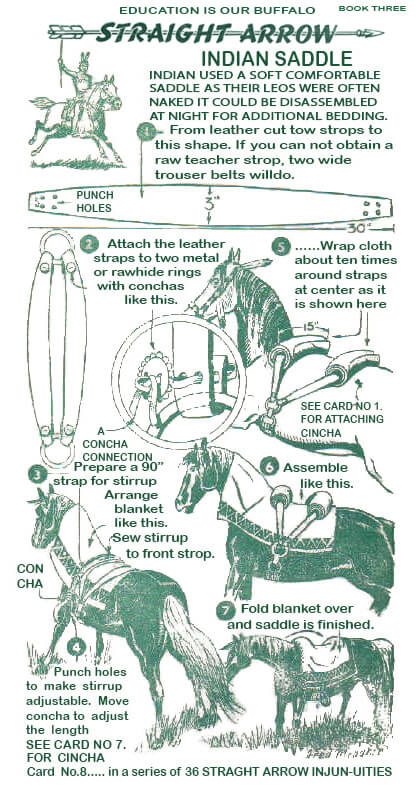
The pad saddle and the frame saddle were the two main styles of Indian saddles. While all mounted Indians wore some type of saddle, the Indians mainly rode bareback when hunting buffalo and in combat. Pad saddles were popular among northern Plains Indians and those living west of the Rockies. It was a kind of a stuffed pillow, kept on with a leather belt and having short stirrups, made of two pieces of soft tanned hide stitched together and stuffed with hair or grass. Indians carrying empty pads to be stuffed with grass and utilised after the horses had been taken were common on horse snatching excursions. The “frame saddle” was popular among some Indians, particularly the Utes, Crows, and Shoshonis. Cottonwood was commonly used for the frame, which was shaped and coated in green rawhide, which held the sections snugly together after drying and shrinking. This saddle had two horns or pommels, one in front and one behind, both 10 inches or more tall. Between the bow and the cantle, the hide seat swung like a hammock. Although it was used by the Navajo and others in the Southwest, it is thought that the Indians invented it independently of the Moorish saddle used by the Spanish conquistadores.


